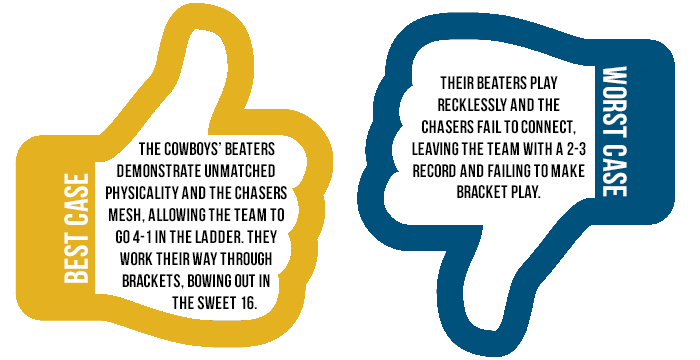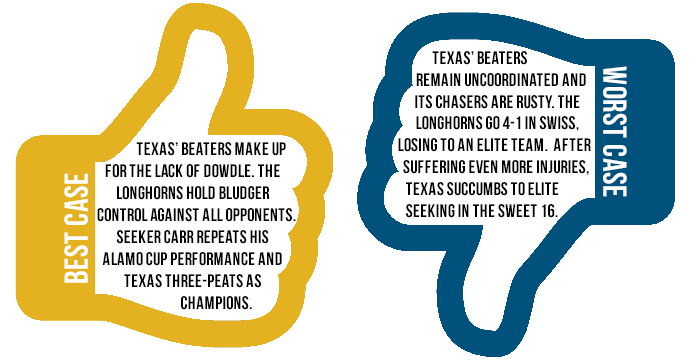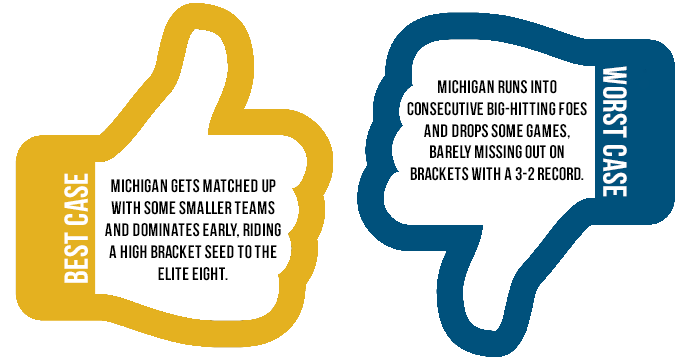Antwerp QC, Much of Belgian Core, Leaves Competitive Quidditch
Rock Hill Roll Call is your in-depth guide to the 80 teams that will compete for the title of World Cup 8 Champion. We’ve reached out to writers and analysts all over the country to bring you the lineups, strategies, focal points and aspirations of each and every attending team. Whether you are looking for a leg up on the competition or just want a detailed preview of the sport’s main event, this is the place for you.
 By Tylor McLaren
By Tylor McLaren
Oklahoma State University’s beating game took a major hit when veteran beater Mark Denker graduated last semester, leaving Leah Huling without her partner in crime. Andy Iverson, who took last season off from the sport, filled this void this season, but he still needs to shake off some serious rust after being absent from the pitch for so long. Without Denker at the helm of the Cowboys’ defense, this squad lacks veteran leadership in the beating corps. The void of experienced beaters could very well hinder this team full of chaser veterans to make it as far as it would like.
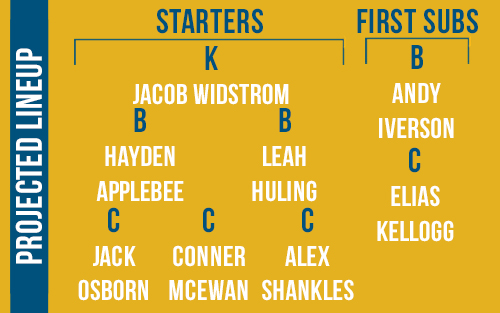 The Cowboys’ young players are going to have to develop by the time World Cup 8 rolls around. At times they show signs of aptitude, but lack the consistency needed to be truly great. If these young players mature and integrate themselves into the play style that Oklahoma State has cultivated, then this team could make a deep run with the athleticism it brings to the table.
The Cowboys’ young players are going to have to develop by the time World Cup 8 rolls around. At times they show signs of aptitude, but lack the consistency needed to be truly great. If these young players mature and integrate themselves into the play style that Oklahoma State has cultivated, then this team could make a deep run with the athleticism it brings to the table.
For the Cowboys to succeed, Huling has to be at the top of her game and Iverson will need to step up to fill Denker’s position flawlessly. Hayden Applebee will have to play a very big role at both beater and chaser, acting as the mortar that holds this team together. With Applebee playing at peak performance, the Cowboys can hang with any team they face off against.
 By Tylor McLaren
By Tylor McLaren
Oklahoma State has finally begun turning heads in the Southwest, garnering some well-deserved recognition for its successes in a region of giants. Its strong performance this year is just a continuation of its success last season–Oklahoma State upset the University of Arkansas twice at the 2014 Southwest Regional Championship and made an unanticipated run to bracket play at World Cup VII.
The Cowboys’ success can be found in their physical style of play. No stranger to the physicality of the Southwest, Oklahoma State has embraced the strengths of its region and begun to flourish. Chasers Applebee, Connor McEwan, Elias Kellogg and Jack Osborn are all very scrappy and can match physically with just about any opposing player on the field. These players are not afraid to make or take a hit, which helps set the tone for the rest of the squad. When these starters are playing at the peak of their performance, there are very few teams that can totally out-match them in the quaffle game.
To complement their blunt physical advantage–especially over out-of-region competitors–the Cowboys’ roster also boasts a versatility that allows them to adapt to their opponents. Applebee in particular has shown himself to be a valuable utility player. Although he is primarily a chaser, Applebee will often start at beater to establish dominance in the beating game. Once initial play settles down, he works back into the game at chaser and continues his dominance with quaffle in hand.
 By Joey Galtelli
By Joey Galtelli
University of South Carolina started this season with one goal in mind: to prove all the nonbelievers wrong. After a mediocre performance at World Cup VII—and an article predicting it—the Gamecocks had all the motivation in the world to improve; and that is just what they did. However, South Carolina has always been cursed with bad retention, which forces the team to rely on its few experienced players.
South Carolina has demonstrated a great ability to keep bludger control against any opponent. Its unusual lineup of a two-male beater set and a female keeper is a difficult strategy to adapt to and has proven troublesome for opponents throughout the season.
Although the Gamecocks thrive defensively, they usually struggle to pull ahead on offense. This keeps most games very close, leaving the snitch grab to determine the winner. This is one of South Carolina’s downfalls because its only reliable source of goals come from inexperienced players who are limited to fast breaks and sloppy passes.
South Carolina’s main issue is that it relies heavily on key players to play the whole game. The only time the Gamecocks sub out their starting beaters by choice is when Kyle Demo switches to seeker. As for the quaffle players, Kaley Crunk typically plays keeper the entire game.
 By Anonymous
By Anonymous
Beater veterans Demo and Joe Goldberg are a dynamic duo that can stop anyone making a break for their hoops. The two of them alone maintained bludger control against all of the Florida teams they faced at the South Regional Championship. Although keeper Crunk packs a strong punch disguised just at 5 feet 6 inches, the Gamecocks rely heavily on their beaters for their primary source of defense. Four out of six of their games at regionals were kept within snitch range.
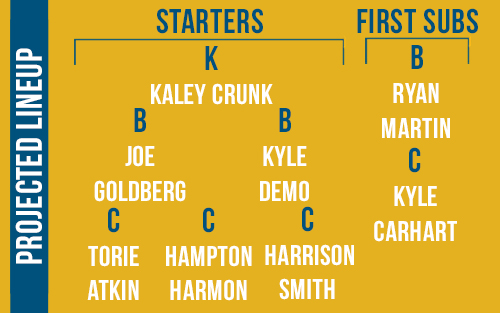 However, playing the whole game can be very tiring for the extremely aggressive Demo, and with no one to replace him when he goes in as seeker, the team begins to falter. Demo has caught seven snitches of South Carolina’s 15 games, but the Gamecocks lost four games due to not catching the snitch. Tiring this small squad out–especially its beaters–is key.
However, playing the whole game can be very tiring for the extremely aggressive Demo, and with no one to replace him when he goes in as seeker, the team begins to falter. Demo has caught seven snitches of South Carolina’s 15 games, but the Gamecocks lost four games due to not catching the snitch. Tiring this small squad out–especially its beaters–is key.
Even though South Carolina’s offense is made up of a lot of newcomers who are limited to their fastbreak abilities and poor synergy, Hampton Harmon and Harrison Smith have proven decent at running through defenses to rack up points. South Carolina was either ahead or tied in points five out of six of its games at the South Regional before the snitch hit the pitch. Besides Harmon and Smith, South Carolina’s other quaffle players usually only have one good play in them per game, which creates a huge dependency on the team’s stars to stay on the pitch.
Goldberg and Demo are their team’s primary source of defense while Harmon and Smith are their primary source of offense. If any of these players become injured, distracted, tired or carded, the shift of the game will change dramatically. Frustrate or tire these young players and the game is yours.
 By We Breathe Quidditch
By We Breathe Quidditch
It is hard to ascertain exactly which Texas squad will show up at World Cup.
Lone Star Quidditch Club might have suffered injuries to Kedzie Teller and its female beaters, Baylor University might have lost Brittany Ripperger to an MCL injury, but none of the top teams in the Southwest are as ravaged by injury as the University of Texas Longhorns.
Beater Christian Dowdle has a torn ACL. Utility Kenny Chilton has a broken foot. Despite appearing perfectly healthy, Paden Pace, Augustine Monroe nor Kiki Crawford played in bracket play at their regional–all presumably recovering from injury.
Most of these injuries are not important. Crawford, Pace and Chilton will have easily recovered by the time they reach Rock Hill. Trusted sources around the team indicate Monroe will probably play in World Cup. Nonetheless, the team’s only long-term injury, Dowdle’s torn ACL, is an extremely serious one. The importance of this beater to Texas cannot be understated.
Against Eighth Man Top-10 teams in the last three seasons, Texas is 11-1 when it possesses bludger control for the majority of game. Without bludger control, the Longhorns are 4-8.
Most of the credit here goes to beater Michael Duquette. Known for his brutal tackles and incredible catching ability, Duquette was often cited as the reason for the Longhorns’ success. But individual beaters do not operate in a vacuum. But during the Longhorns’ high point this season–its 140*-110 win over Lone Star–it was Dowdle who played for an incredible stretch of time, helping her fellow beaters maintain and retrieve bludger control. The effect of removing Dowdle from the lineup can be seen in Texas’ performance against Baylor at the Southwest Regional. Texas’ beaters looked uncoordinated and failed against a Baylor zone that the Longhorns had played so well against when Dowdle was on their roster.
But despite all of Texas’ woes, it is difficult to look at the team as any less of a threat. After the Southwest Regional Championship before World Cup VI, everyone took Baylor’s victory over the Longhorns as a sign that Texas was not the biggest threat at World Cup. And yet, while the Bears did put on an incredible showing at World Cup VI, it was Texas that dominated and took the title.
Remember the shellacking the Bears gave the Longhorns at Diamond Cup before World Cup VII? That 150*-40 match was the worst defeat in Texas’ history and caused many to count Texas out of the running for World Cup. And yet, the team fixed its mistakes and won World Cup VII.
Texas is a very strategic team. After two SWIM losses in the fall, the Longhorns picked up former World Cup VI seeker Evan Carr from their B-team. The result was instantaneous–they became the first team to defeat Lone Star all season long. Injuries, however, are a more daunting challenge. The fate of the Longhorns will rest on their ability to shake off the rust of the season, adapt to their players’ injuries and learn from their regional performance.
 By Anonymous
By Anonymous
Texas is not invulnerable. Despite having incredible athletes and experienced, two-time world champions on the team, Texas has shown throughout the season that even lower-tier teams have a chance of an upset. At Lone Star Cup, the LA Gambits were in snitch range of Texas. At Alamo Cup, Sam Houston State University held the Longhorns in snitch range until the snitch appeared on pitch. At the Southwest regional, University of Arkansas and UTSA held Texas in snitch range until the seeker floor expired.
Texas runs a handoff-based offense. When going against a two-bludger defense, the Longhorns rotate the ball up top until its beaters have wreaked enough havoc for the offense to crash in. At this point, a pass to Aryan Ghoddossy or Martin Bermudez by the hoops is likely, as well as a pass to Audrey Wright or Kaci Erwin behind the hoops. Against one bludger, Texas runs its trademark 1.5 bludger offensive strategy to disrupt the lone bludger while its chasers power through the bludgerless defense.
Individually, the Longhorns are extremely skilled. Chasers Wright and Erwin can tackle even the strongest and biggest players. While this team does have a lot of small and fast players–exemplified mostly by its starting lineup–the chasing squad is anchored by the physicality of players such as Chilton, Pace and star rookie Nick Marino. The Longhorns are coached and assisted by former captain Monroe, who may even play at World Cup himself. Even without his keeping abilities, Texas has more or less found a very suitable replacement in David Acker, who plays the same elusive and agile style of keeping that Monroe does.
 However, this team has always been anchored on the success of its beaters. With an injury to starting beater Dowdle, expect Hallie Pace to step up and play a greater role. While Pace’s beating has been competent throughout the season on both sides of the ball, her inexperience makes it easier to regain bludger control from her than it ever was with Dowdle. Furthermore, Dowdle was the Longhorns’ anchor on beating, staying in for ten-minute stretches at a time. Pace will have to show herself capable of maintaining that level of endurance throughout a game if this beating squad is to prove capable of winning a championship.
However, this team has always been anchored on the success of its beaters. With an injury to starting beater Dowdle, expect Hallie Pace to step up and play a greater role. While Pace’s beating has been competent throughout the season on both sides of the ball, her inexperience makes it easier to regain bludger control from her than it ever was with Dowdle. Furthermore, Dowdle was the Longhorns’ anchor on beating, staying in for ten-minute stretches at a time. Pace will have to show herself capable of maintaining that level of endurance throughout a game if this beating squad is to prove capable of winning a championship.
Texas uses its male beaters on offense to wear down the opposing team’s beaters. Beater Duquette in particular is deceptively strong and fast. When using the 1.5 strategy, Duquette waits until the defending beater loses track of him or moves out of position and takes a running tackle at the back beater. Effective defensive strategies against 1.5 must be practiced against this team.
In both its Arkansas and UTSA games at regionals, Texas showed that an effective bludger defense can result in a tight game. In this case, Texas turns to its seekers: Carr and William King. Carr has three years of experience seeking and competed for Texas in World Cup VI. King, despite being a freshman, has caught the majority of SWIM catches for his team this season. Together they are deadly, and the addition of Carr this semester allows Texas to keep Ghoddossy and Chilton in the chasing game instead of transferring them over to the seeking game.
As stated before, Texas has shown vulnerability over and over this season playing in snitch-range games with many lower-ranked teams. But there is a reason the Longhorns have never lost those games. In order to beat Texas, a team must use every opportunity and every weakness. A tight beating game, a physical, careful and conservative chasing game, flawless snitch-on-pitch beating and a brilliant seeker are all avenues of attack. Possess them all, and it is likely that your team will be the first to upset the Longhorns this season.
 By Luke Changet
By Luke Changet
If any team from the Midwest has the ability to match the Southwest pound for pound, it is certainly University of Michigan. This is a squad of bruisers who will pound right through you and will run the 1.5 bludger strategy consistently to capitalize on the team’s superior physicality.
The Wolverines’ passing game is not as smooth as other teams’, but it really does not need it to be. Michigan plays its best game of quidditch when it can swing the ball around into a one-on-one matchup. The team’s passes are not meant to create opportunities by the hoops; instead, they are meant to put players such as Andrew Axtell, Malek Atassi, Matt Oppenlander or Eric Wasser into position to drive. The entirety of Michigan’s chasing lineup is built for driving one-on-ones, except for maybe Oppenlander, who has perhaps the best shooting abilities of the lot.
Michigan’s beaters also happen to be bruisers, and this makes its 1.5 bludger play highly effective. Even if the team fails to bring down the defensive beater, its beaters can get in the way enough to still disrupt the defense and open a driving lane. But do not make the mistake of thinking Michigan needs to bring out the 1.5 bludger strategy on every play to find success–this team’s offensive and defensive lineups can make their own plays. The addition of offensive beater play just adds that finishing touch.
 By Anonymous
By Anonymous
Up until World Cup VII, in which the Wolverines made a Sweet 16 run that ended with a 90*-60 loss to rival Ohio State University, University of Michigan was notorious for being an under-performing team. This was largely due to it choosing not to bring competitive rosters to the majority of tournaments.
This year, the situation seemed similar, as the Wolverines fell in their first bracket play game of the Midwest Regional Championship. Now, coming into World Cup 8, Michigan has a lot to prove. So far this year it looks like this team has 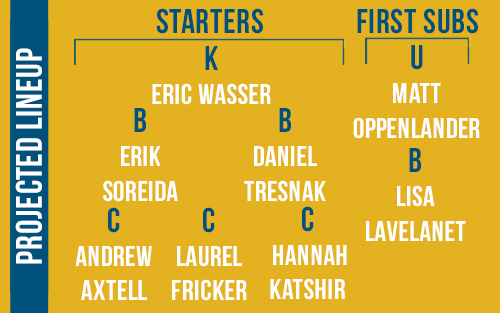 reverted to an Axtell-heavy offense, with the minor change of him being an off-ball chaser. While Andrew Axtell may be an intimidating player to a defender at the hoops, you should not hesitate to step up to him–most of the time he will not pass, so a tackle is your best bet. Beyond the most obvious facet of the Wolverines’ offense are Michigan’s highly aggressive beaters, who run the 1.5 system consistently and relentlessly when they have control. The best way to beat this team on offense is to take advantage of its slow defensive transitions after missed shots, as the quaffle players tend to lose the ball behind the hoops and retreat slowly. If they are caught closer to midfield by a defensive beater with a nearby chaser recovering, it is hard for them to get back in time, as Michigan State University proved in its 120*-90 victory over the Wolverines in the fall.
reverted to an Axtell-heavy offense, with the minor change of him being an off-ball chaser. While Andrew Axtell may be an intimidating player to a defender at the hoops, you should not hesitate to step up to him–most of the time he will not pass, so a tackle is your best bet. Beyond the most obvious facet of the Wolverines’ offense are Michigan’s highly aggressive beaters, who run the 1.5 system consistently and relentlessly when they have control. The best way to beat this team on offense is to take advantage of its slow defensive transitions after missed shots, as the quaffle players tend to lose the ball behind the hoops and retreat slowly. If they are caught closer to midfield by a defensive beater with a nearby chaser recovering, it is hard for them to get back in time, as Michigan State University proved in its 120*-90 victory over the Wolverines in the fall.
A surprising change for the team, though, is the development of its seeking game. Last year in Myrtle Beach, Michigan went 4-5 in SWIM situations, primarily due to the tenacity of Ben Griessmann and the commitment to keeping beaters on the opposing seeker. If the team is up 10 points, it is going to be very difficult to make a 40-point swing on the Wolverines’ physical chasers and keepers, so they trust the quaffle carriers to control play enough to keep them in range. This has proven effective, as they have only been taken out of snitch range once in the last three World Cup tournaments. The addition of chaser/seeker Darin Wong allows Michigan to keep Axtell on the field longer when the snitch has returned, as opposed to his former role of second-string seeker, where he generally knocked snitches over before getting a chance to catch them.
The question remains as to how far Michigan will go at World Cup, but if history holds, Michigan will again surprise onlookers and make a solid run.
Graphics and photo illustration by Amanda Dallas. Original photos by Monica Wheeler (top) and Will Michels (bottom).
Archives by Month:
- April 2025
- May 2023
- April 2023
- April 2022
- January 2021
- October 2020
- September 2020
- July 2020
- May 2020
- April 2020
- March 2020
- February 2020
- January 2020
- December 2019
- November 2019
- October 2019
- August 2019
- April 2019
- March 2019
- February 2019
- January 2019
- November 2018
- October 2018
- September 2018
- August 2018
- July 2018
- June 2018
- April 2018
- March 2018
- February 2018
- January 2018
- November 2017
- October 2017
- July 2017
- June 2017
- May 2017
- April 2017
- March 2017
- February 2017
- January 2017
- December 2016
- November 2016
- October 2016
- September 2016
- August 2016
- July 2016
- June 2016
- May 2016
- April 2016
- March 2016
- February 2016
- January 2016
- December 2015
- November 2015
- October 2015
- September 2015
- August 2015
- July 2015
- June 2015
- May 2015
- April 2015
- March 2015
- February 2015
- January 2015
- December 2014
- November 2014
- October 2014
- September 2014
- August 2014
- July 2014
- May 2014
- April 2014
- March 2014
- February 2014
- January 2014
- November 2013
- October 2013
- September 2013
- August 2013
- July 2013
- June 2013
- May 2013
- April 2013
- March 2013
- February 2013
- January 2013
- December 2012
- November 2012
- October 2012
Archives by Subject:
- Categories
- Awards
- College/Community Split
- Column
- Community Teams
- Countdown to Columbia
- DIY
- Drills
- Elo Rankings
- Fantasy Fantasy Tournaments
- Game & Tournament Reports
- General
- History Of
- International
- IQA World Cup
- Major League Quidditch
- March Madness
- Matches of the Decade
- Monday Water Cooler
- News
- Positional Strategy
- Press Release
- Profiles
- Quidditch Australia
- Rankings Wrap-Up
- Referees
- Rock Hill Roll Call
- Rules and Policy
- Statistic
- Strategy
- Team Management
- Team USA
- The Pitch
- The Quidditch Lens
- Top 10 College
- Top 10 Community
- Top 20
- Uncategorized
- US Quarantine Cup
- US Quidditch Cup



